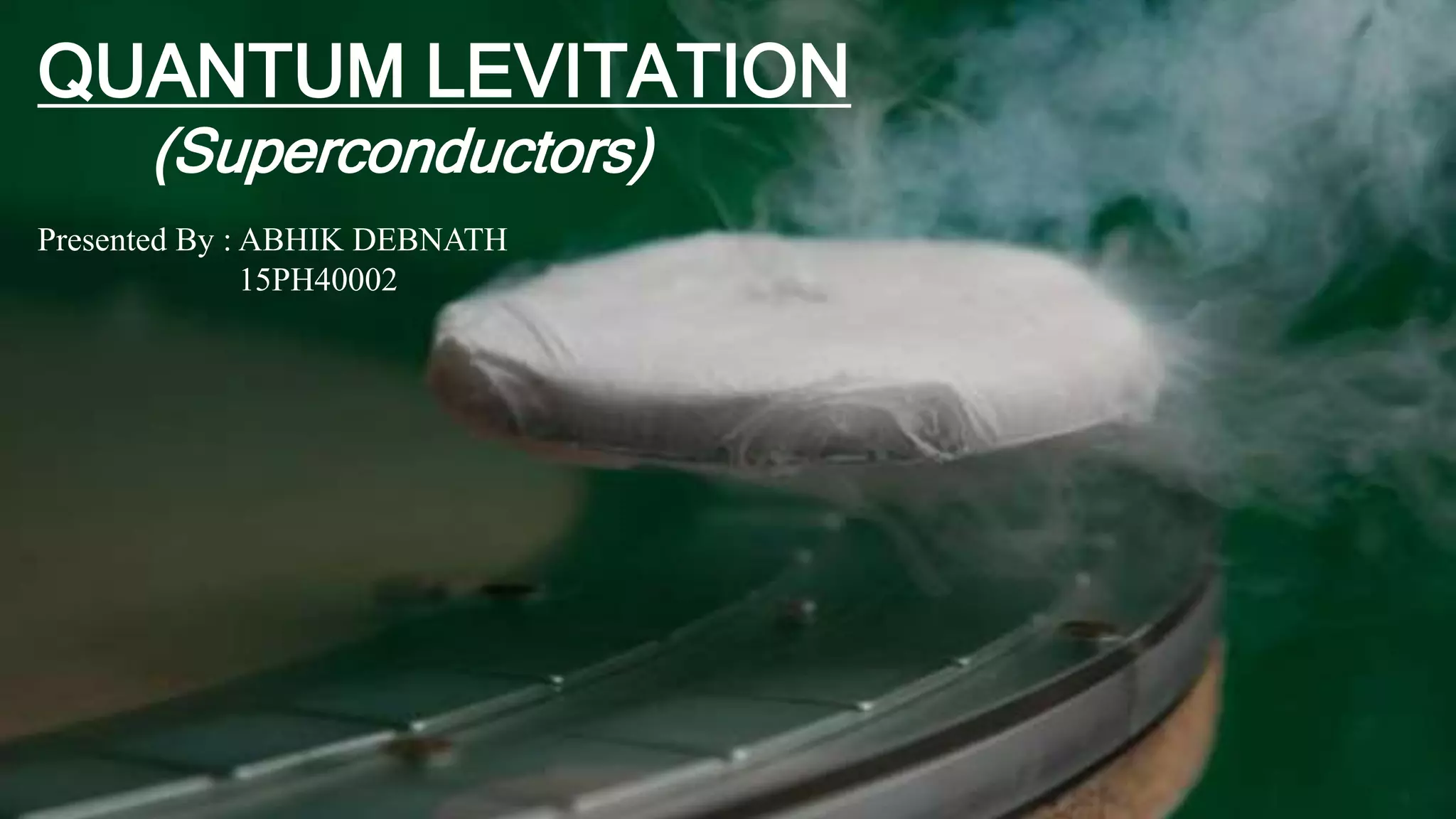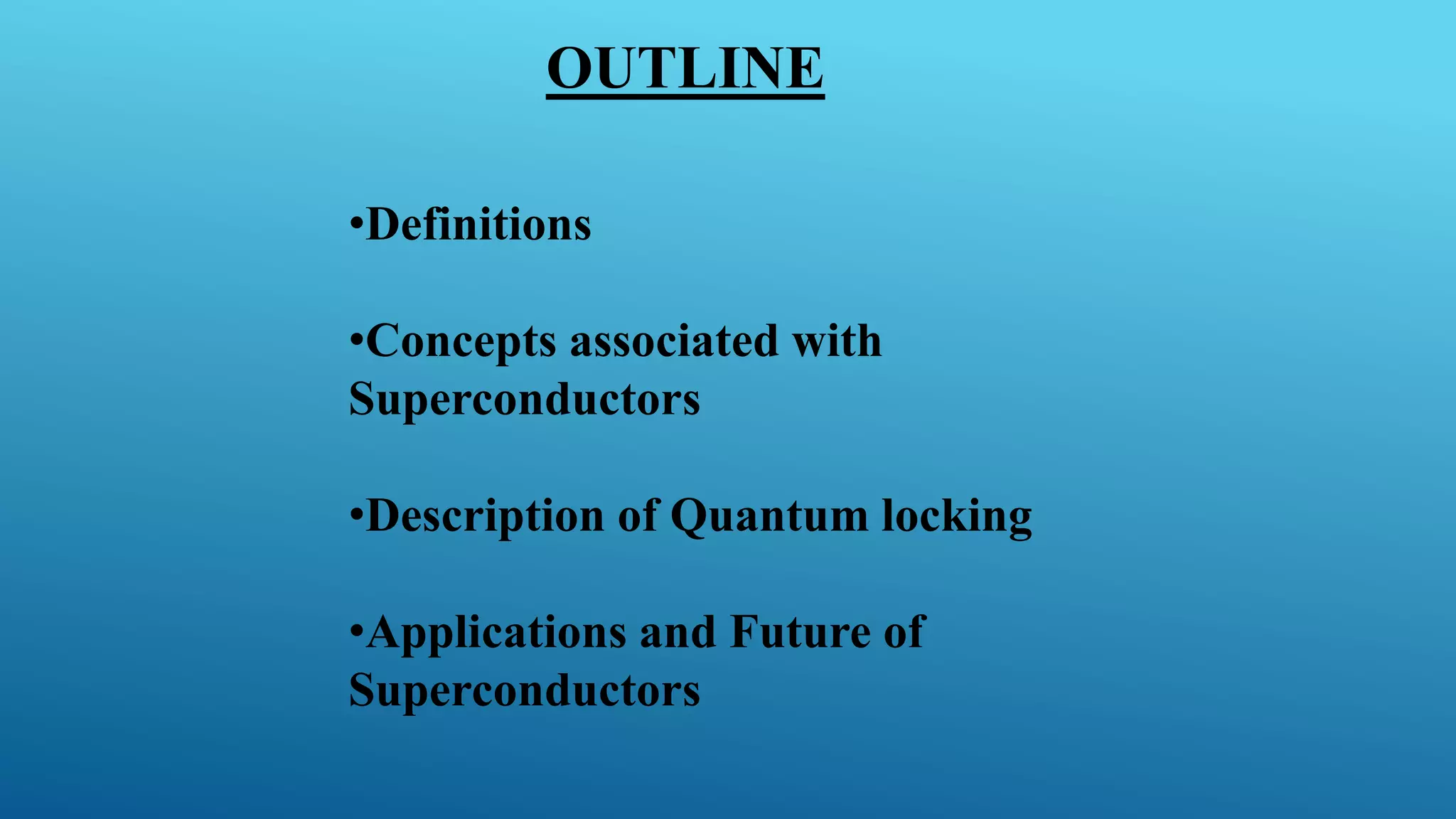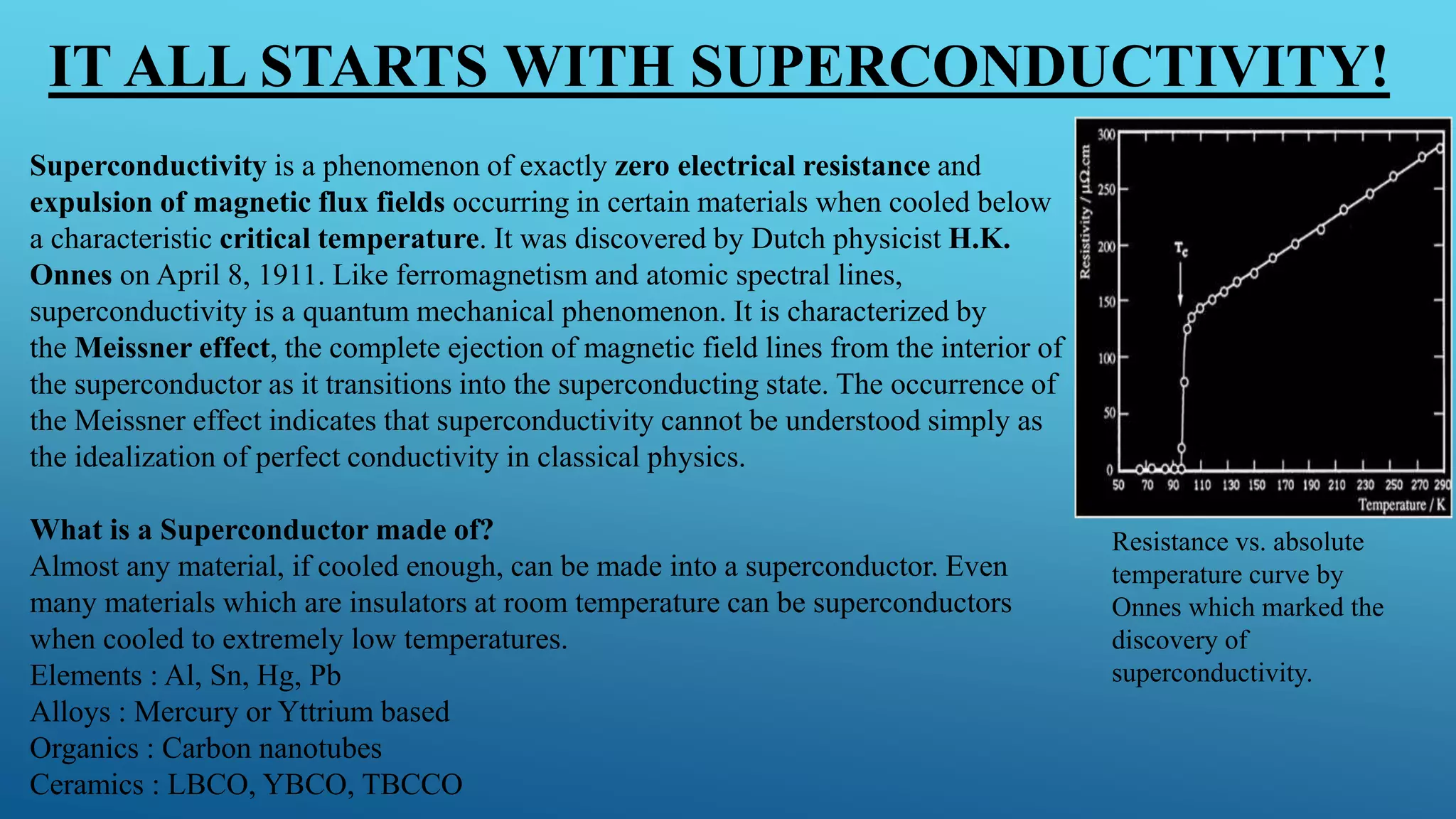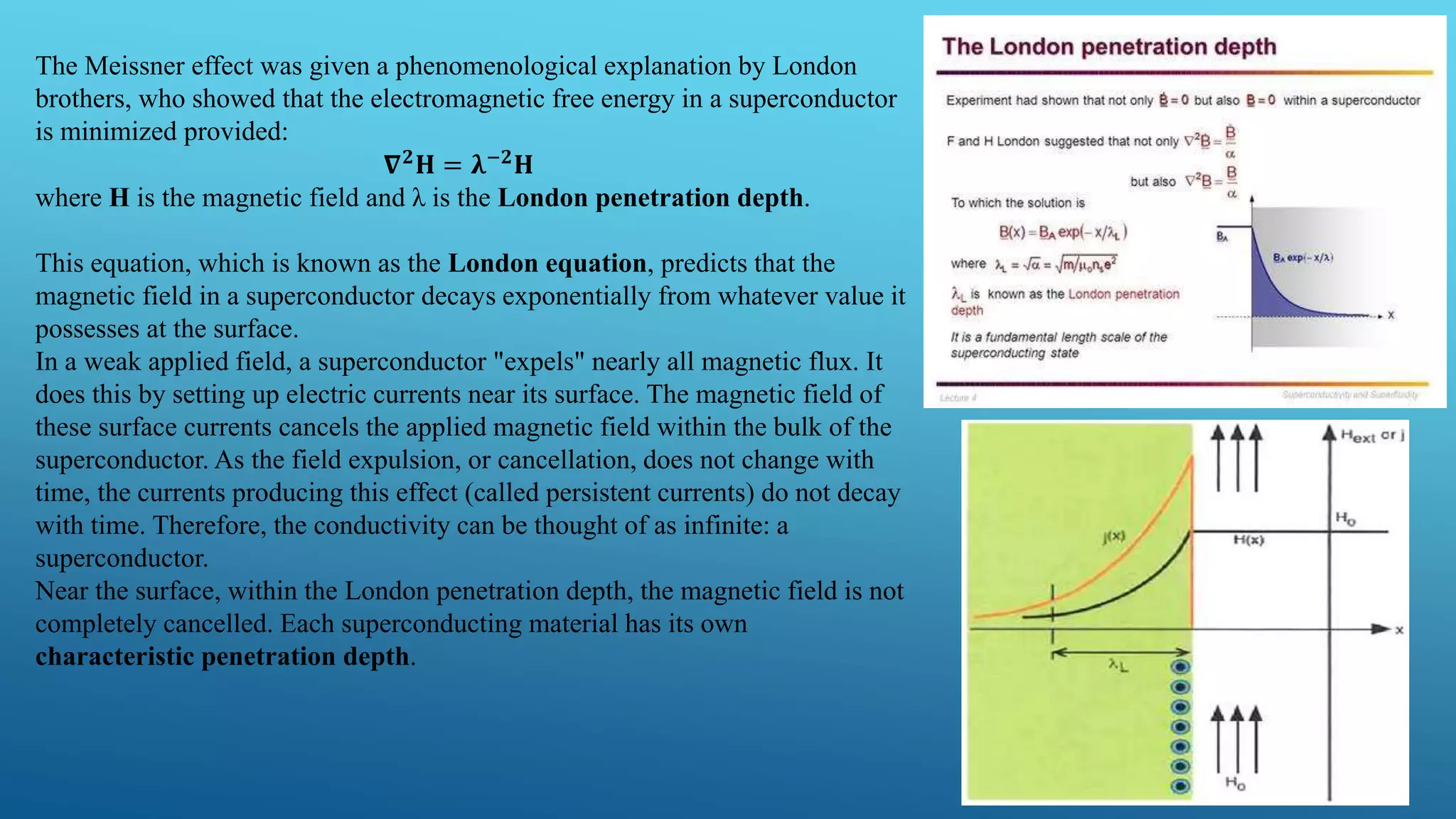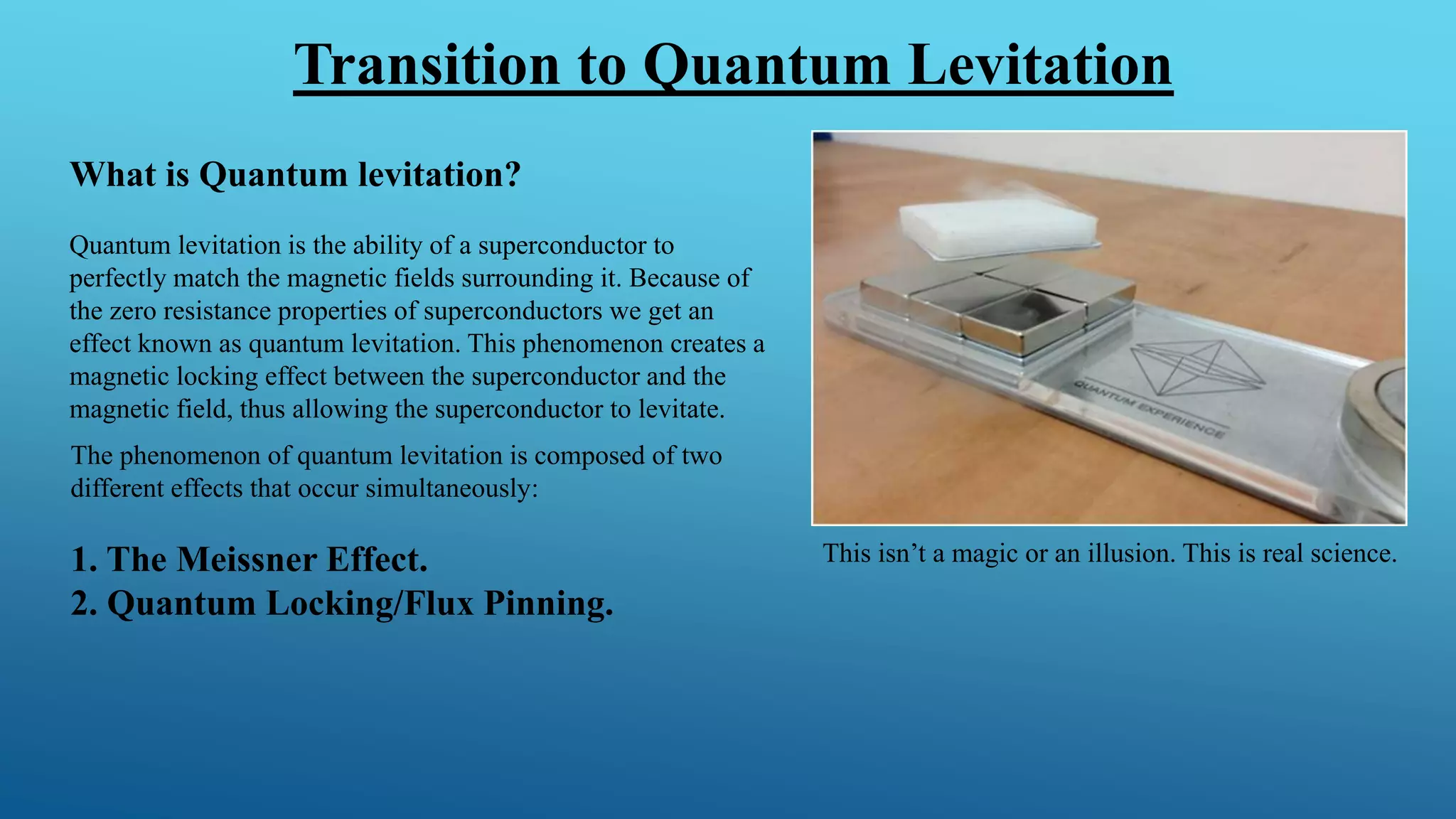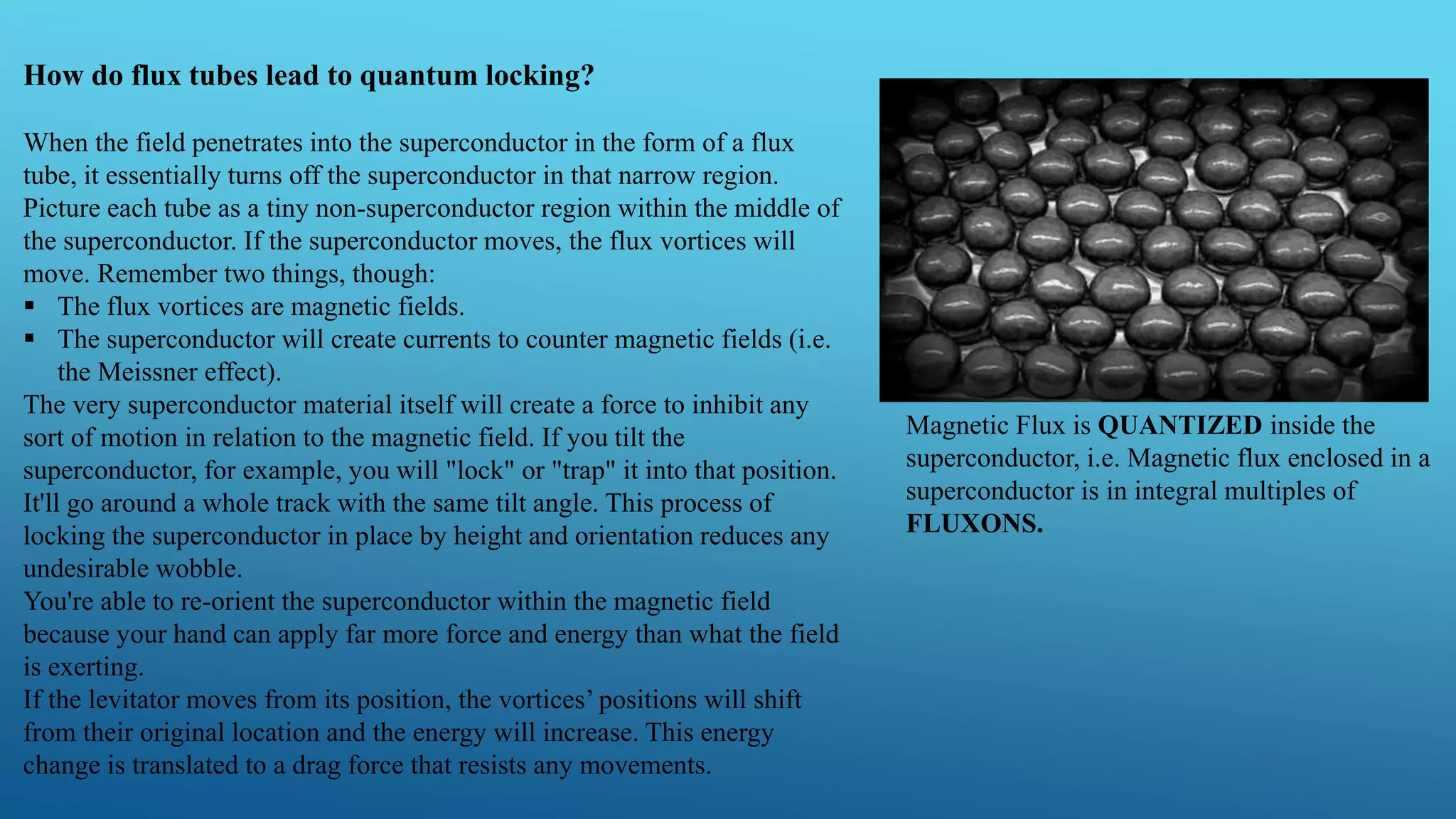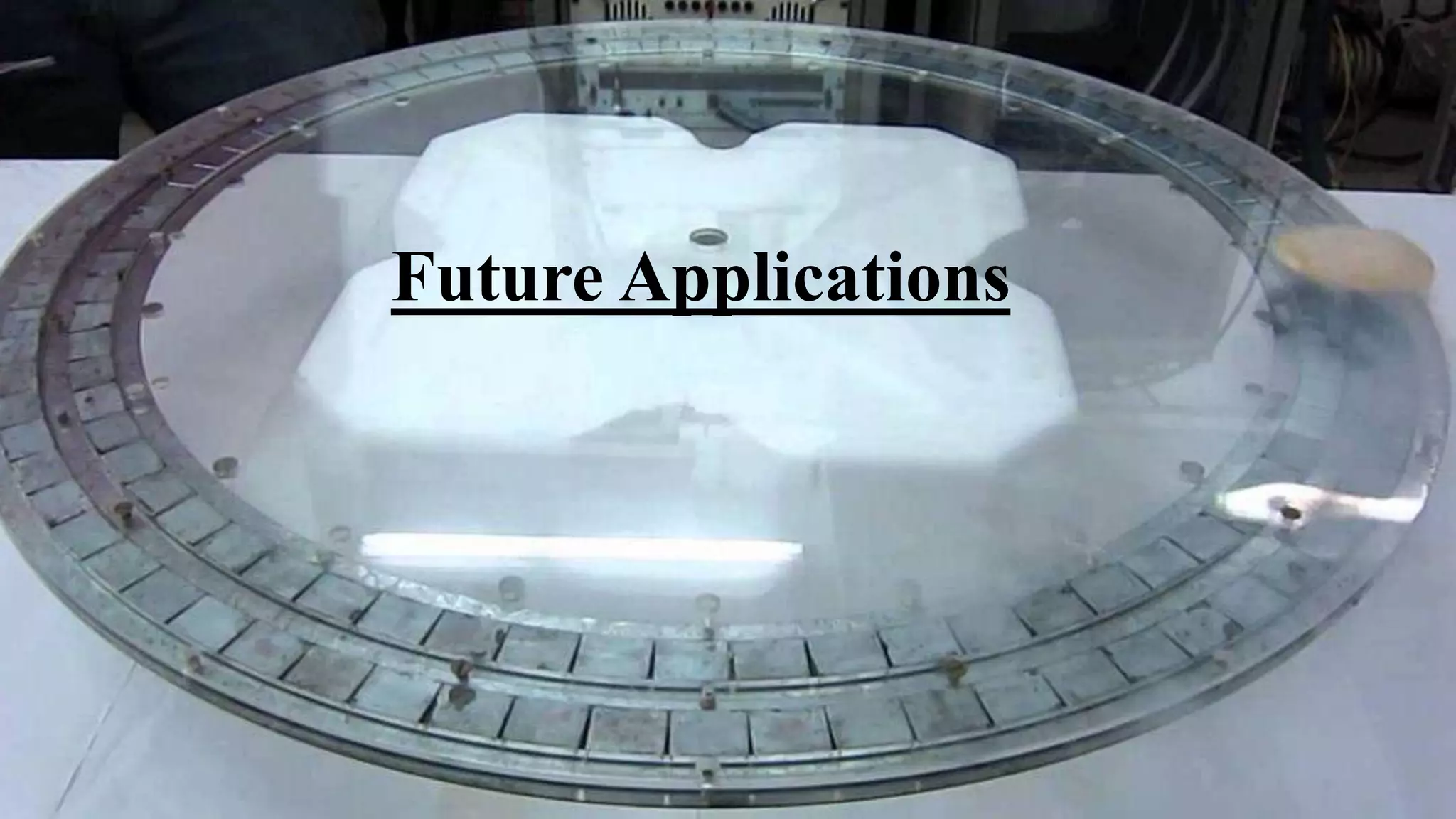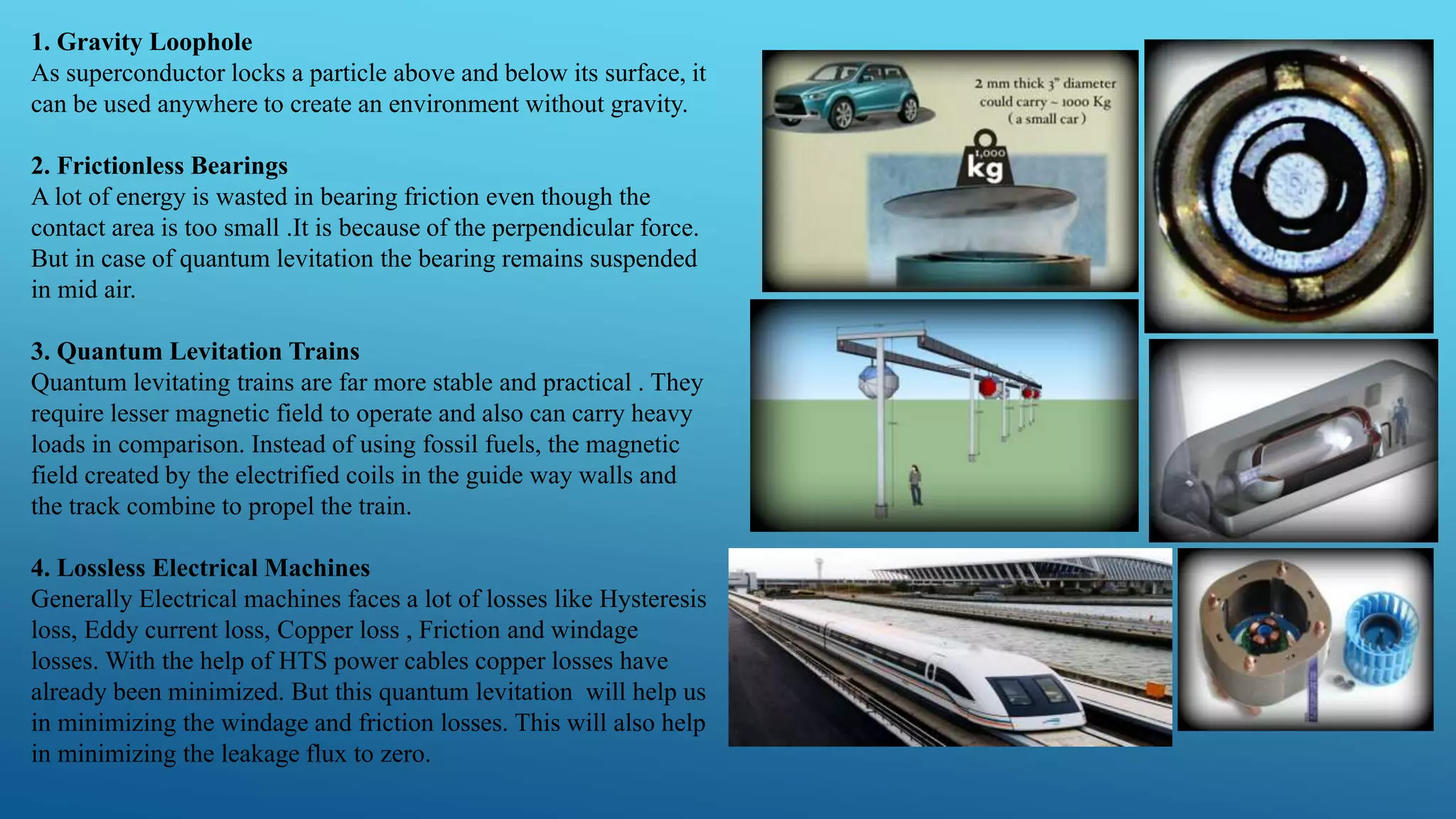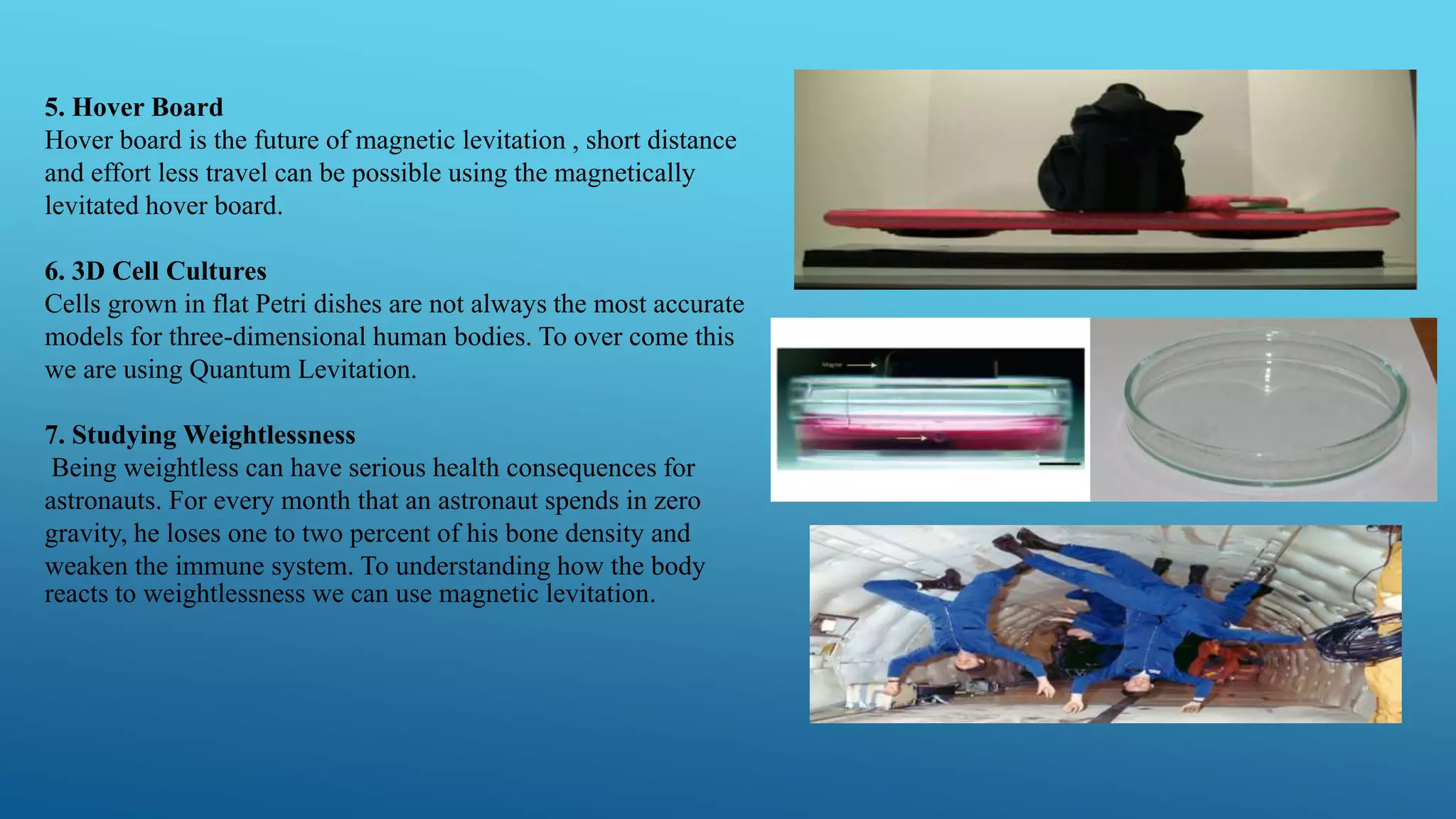Superconductors expel magnetic fields below a critical temperature due to the Meissner effect. Quantum levitation occurs when a type-II superconductor is placed above a magnet. Magnetic flux tubes form and become pinned inside the superconductor, locking it in place against gravity. As the superconductor moves, energy increases due to the shifting flux tubes, creating a drag force that resists movement and provides stable levitation. Potential applications include frictionless trains and devices that could simulate weightlessness.
